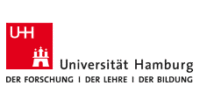Urban river restoration is emerging as a powerful response to the intertwined challenges of climate change, urbanization, and environmental justice. As highlighted by Guimarães et al. (2021), cities worldwide face mounting flood risks and degraded ecosystems due to channelized rivers, polluted waterways, and the “urban stream syndrome.” The catastrophic 2015 Accra floods, where over 200 lives were lost, underscore the urgent need for resilient, nature-based solutions in African cities.
Scientific literature now recognizes that restoring urban rivers is more than an environmental fix it is a climate adaptation strategy. Green and blue infrastructure (GBI), such as revitalized riverbanks and restored floodplains, helps cities absorb extreme rainfall, recharge aquifers, and reduce urban heat. These interventions not only mitigate flood risks worsened by climate change but also improve water quality, enhance biodiversity, and create recreational spaces that support public health.
Crucially, as Guimaraes et al. note, urban river restoration must balance ecological goals with social realities. Community-driven projects tailored to local needs and constraints can reintegrate rivers into city life, supporting livelihoods and advancing climate resilience. Even partial restoration, when guided by inclusive frameworks, can bring hope and tangible benefits to urban communities.
To conclude, restoring rivers is restoring cities’ capacity to thrive in a changing climate. By centering nature, equity, and resilience, we open new pathways for a more sustainable and climate smart urban development.
Sources:
- Eric Gaisie, et tal. (2023) Planning for context-based climate adaptation: Flood management inquiry in Accra
- Guimarães, L.F., et al. (2021). The challenges of urban river restoration and the proposition of a framework towards river restoration goals. Journal of Cleaner Production.
- Ede, V.I., et al. (2020). Urban river restoration in Accra, Ghana: Opportunities for flood risk reduction and ecosystem services. Sustainability.
- Mensah, A., et al. (2022). Ecological restoration and climate adaptation in West African cities. Urban Ecosystems.
- Graphic Online. (2025, June 2). 10 years after June 3rd disaster: Nii Ashitei Ashietey leads community effort to tackle flooding in Klottey Korle. Graphic Online. https://www.graphic.com.gh/news/general-news/10-years-after-june-3rd-disaster-nii-ashitei-ashietey-leads-community-effort-to-tackle-flooding-in-klottey-korle.html

Dear Augusta,
I would like to second Leo’s comments. Additionally, you may make the link to researching and shaping climate futures a bit more explicit. Where exactly is the scientific progress that you can take from the cited literature and how does river restoration shape future climates (in my view it reacts to possible future extremes 😉
But in general I am very happy with the clear message and well related literature list that you compiled, so I think you are on the right trajectory.
This is a nice starting point for integrating scientific literature into your project. I like how your research question directly relates to the cited literature (although you could make that link still a bit more explicit).
That being said, I strongly recommend that you dive a little deeper into the material and also explicitly tell us as readers about that. Every resource you name at the end of your text must be clearly related to statements you make in the text using citation marks such as “[1]” (where the number 1 is related to a certain resource, which you would clarify in your literature list) or “(Gaisie et al., 2023)”. Without this direct attribution it is hard to judge which literature knowledge you took from which research paper. Please keep this in mind for future iterations on this text, but also for the poster itself.
In terms of resources, please cite papers in the sources section always using at least main author, year, title, journal, and doi. Especially the last point is crucial because it enables a unique identification of the work that you cite and usually contains a direct link to the paper.